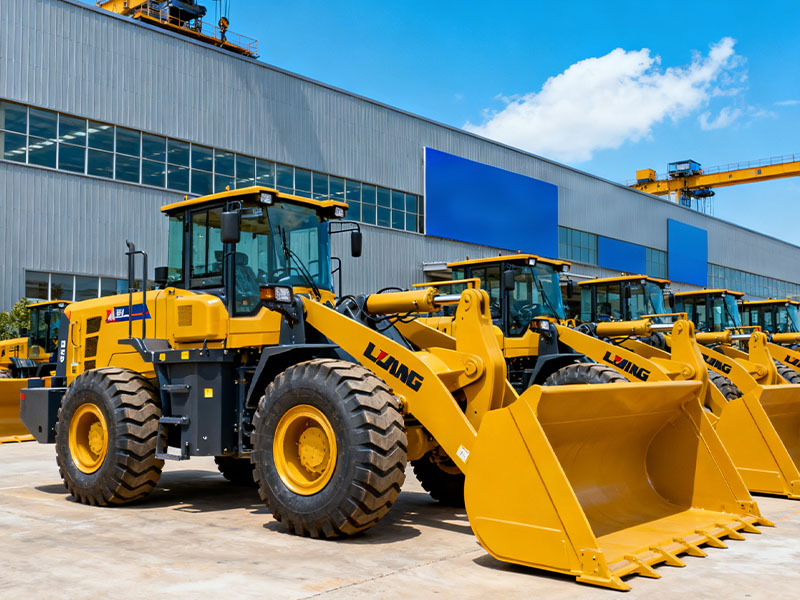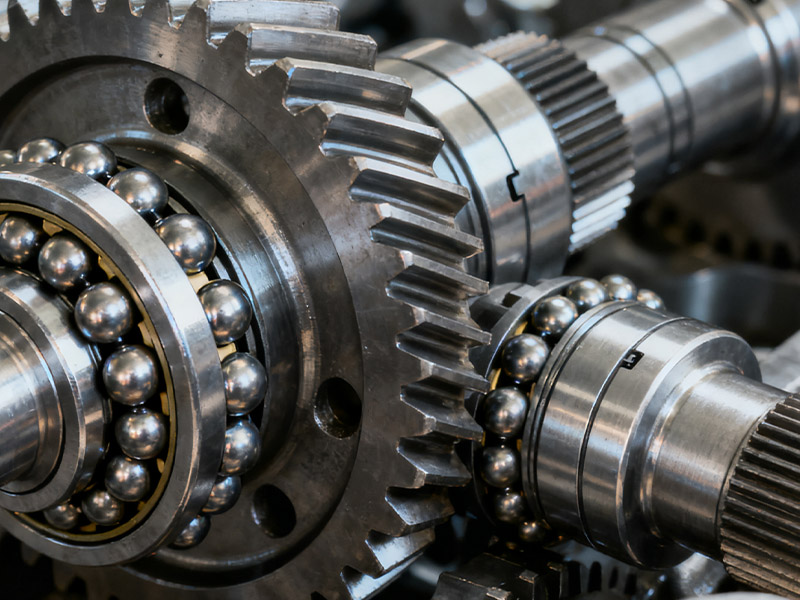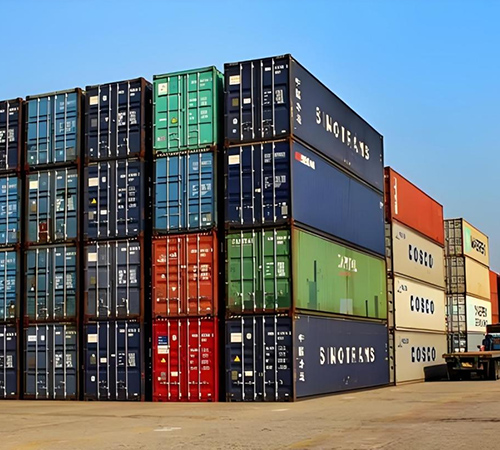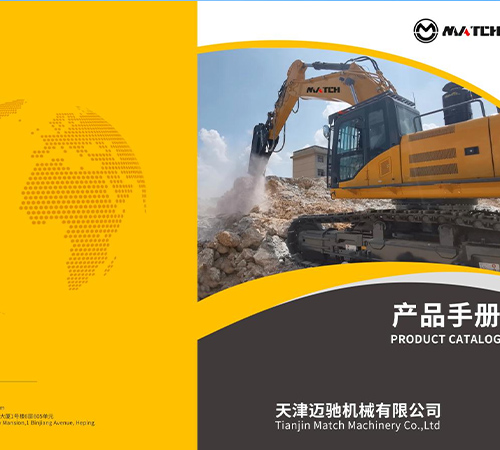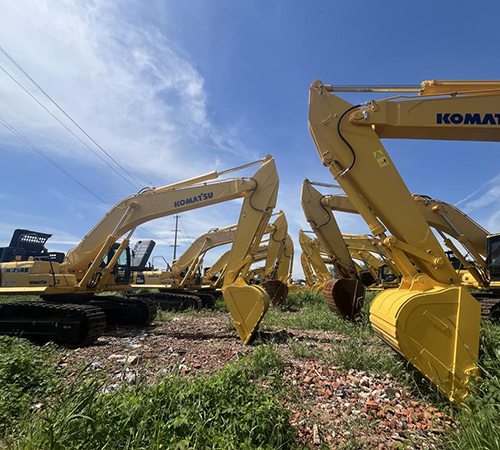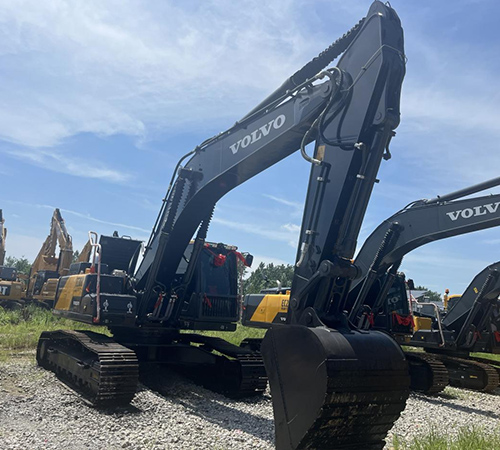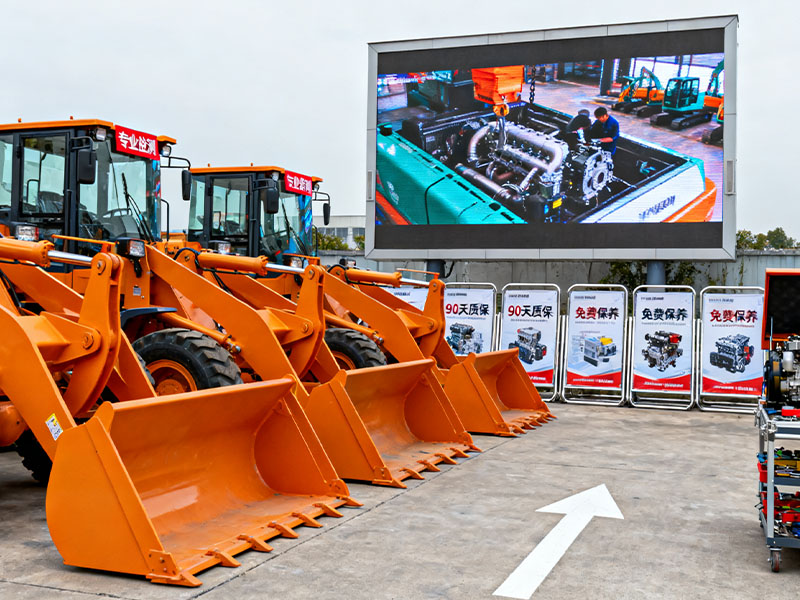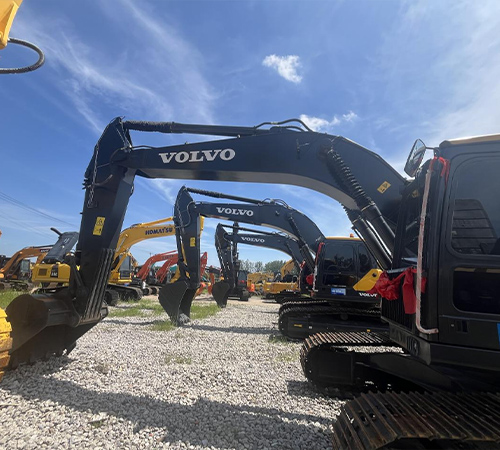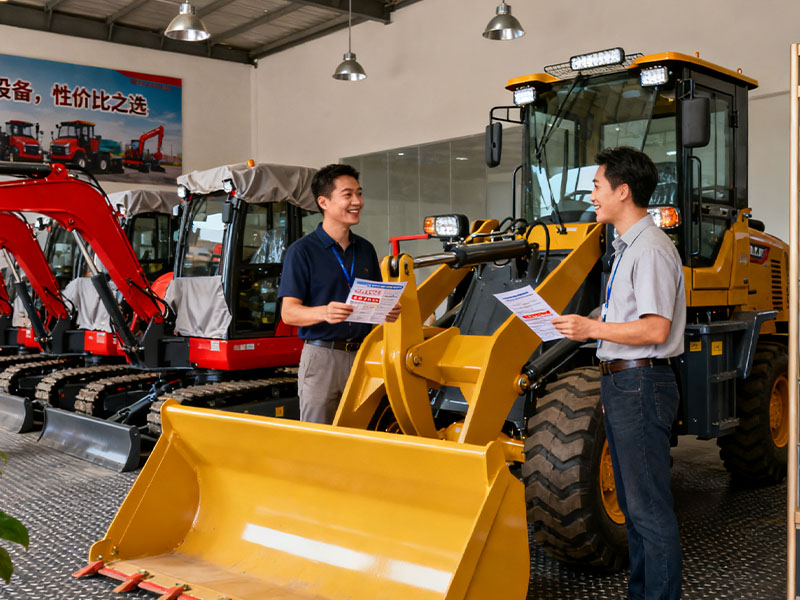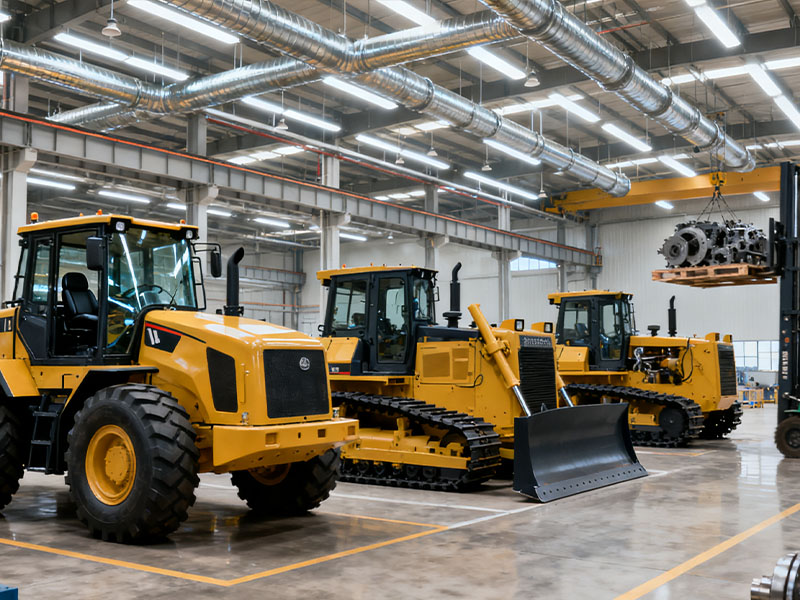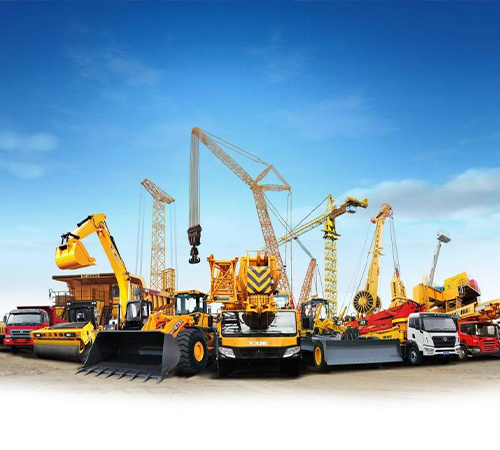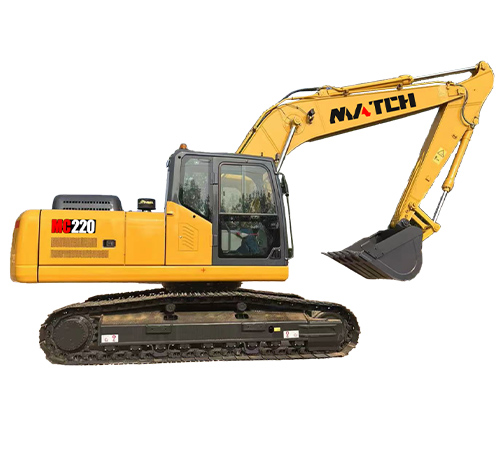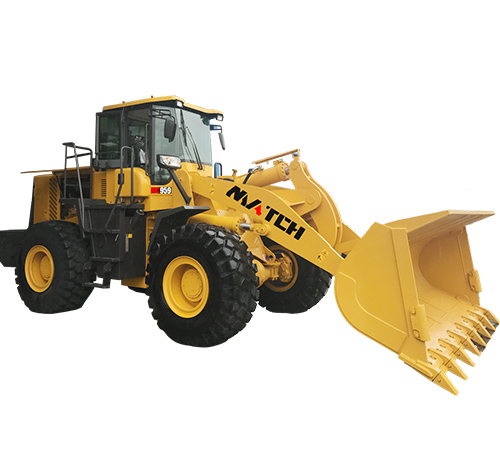Exporting construction machinery under the SKD model is a key step for Chinese construction machinery companies to upgrade from “product exports” to “brand and production capacity exports.”
I. What is SKD? How does it differ from CKD and complete machine exports?
First, let’s clarify a few key concepts:
· Complete machine export: All production, assembly, and testing are completed in a Chinese factory, and the finished equipment is shipped directly to overseas customers. This is the most traditional and simplest model.
· SKD: Semi-knocked-down (SKD) – This model involves disassembling the equipment into several large assemblies or modules, such as the chassis, engine, cab, and working equipment (bucket, boom), and then packaging them separately before shipping to the destination country. Local factories or partners then perform simple bolting and assembly, followed by testing and painting.
· CKD: Completely knocked-down (CKD) – This model involves a higher degree of disassembly, with nearly all components packaged and exported as individual parts. Nearly all assembly processes are completed locally, essentially building an overseas assembly line in China.
Core difference:
Disassembly degree: whole machine export < SKD < CKD
Localization degree: whole machine export < SKD < CKD
For Chinese construction machinery brands, SKD is currently the most mainstream and practical localization model.
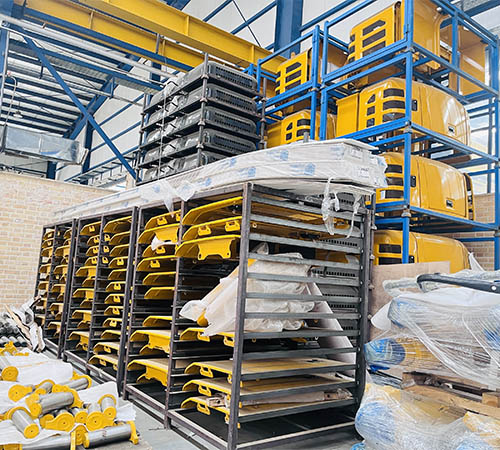
Why do Chinese brands choose the SKD (Sknitted Goods) model for export?
The advantages of the SKD model are strategic, primarily reflected in the following aspects:
1. Avoiding High Tariffs and Trade Barriers
· Many developing countries impose high tariffs (as high as 20%-40%) on imported complete machines to protect their industries or increase fiscal revenue, but tariffs on “components” are much lower. Importing SKD as “semi-finished products” or “components” significantly reduces the tax costs of the final product, thereby ensuring price competitiveness in the end market.
2. Reducing Logistics Costs
· Complete machines take up a lot of space and have irregular shapes, resulting in high logistics costs. Disassembling equipment into modules allows for more efficient use of container space, significantly reducing the average ocean freight cost per unit.
3. Meeting Local Content Requirements
· Many countries (such as Brazil, India, Russia, and many Belt and Road Initiative countries) have policies requiring government procurement or certain large-scale projects to use products that meet a certain local content ratio. SKD assembly is considered local manufacturing, which can help Chinese brands gain market access.
4. Rapid Market Responsiveness and Cost Reduction
· Establishing assembly plants in target markets allows for better customized production based on local needs (such as varying emission standards and configurations) and shortens delivery cycles. Furthermore, local sourcing of some low-value components (such as tires, batteries, and hoses) can further reduce costs.
5. Enhanced Brand Image and After-Sales Service
· Labels such as “Locally Assembled” or “Locally Made” can enhance local brand recognition and trust. Furthermore, assembly centers often also serve as parts warehouses and repair service centers, significantly improving after-sales response and boosting customer satisfaction.
6. Diversified Supply Chain Risk
· Moving final assembly overseas can mitigate the direct impact of international political and trade frictions on finished product exports.

III. Core Business Processes and Key Points for SKD Exports
This process is more complex than finished product exports and involves coordination both domestically and internationally.
1. Preliminary Market and Policy Research
· Key Points: Thoroughly understand the target country’s tariff policies, localization requirements, investment environment, partner qualifications, labor laws, and other aspects.
2. Partner Selection and Factory Establishment
· Key Point: Find a reliable local partner (or build your own assembly plant) and assess their technical capabilities, financial strength, and market reputation. Plan the assembly line layout and production capacity.
3. Product Disassembly and Modular Design
· Key Point: Consider SKD requirements from the design stage and optimize module division. Ensure that the disassembled assembly is not damaged during transportation and can be assembled quickly and accurately on site.
4. Supply Chain and Production Planning Management
· Key Point: Coordinate the domestic production and procurement of core components (such as engines and hydraulic parts) to ensure that SKD kits can be shipped on time and in complete sets. This is a huge test of supply chain management capabilities.
5. Packaging and Logistics
· Key Point: SKD module packaging requires professional design to ensure rust, shock, and moisture resistance. Customs clearance documents (such as bills of lading, invoices, packing lists, and certificates of origin) must clearly indicate “SKD kits” and accurately declare the value and HS code of each module.
6. Overseas Assembly and Quality Control
· Key Points:
· Technology Export: Dispatch Chinese engineers to provide technical guidance, train local workers, and establish standardized assembly work instructions.
· Quality Management: Establish a strict quality control system to inspect incoming SKD modules, locally sourced parts, and the finished units that roll off the production line.
· Key Process Control: Standardization is required for processes such as hydraulic line connections, torque tightening, and electrical wiring to prevent failures caused by improper assembly.
7. Local Testing, Certification, and Sales
· Key Points: Assembled equipment must pass local regulatory certifications (such as noise, safety, and emissions) before being released to the market.
8. After-Sales Service and Parts Supply
· Key Points: Establish a parts center centered around the overseas assembly plant to stock commonly used parts and assemblies, train the local technical service team, and build an efficient after-sales network.
IV. Challenges and Risks
1. High Management and Communication Costs: Managing overseas teams and partners across cultures and regions is a major challenge.
2. Intellectual Property Risk: The process of technology and management export carries the risk of core technology leakage.
3. Investment Risk: Establishing an assembly plant and supply chain requires upfront capital investment and carries the risk of market volatility.
4. Supply Chain Risk: International logistics delays and unstable domestic supply of core components can directly lead to production halts at overseas assembly lines.
5. Quality Control Risk: Inadequate local management and training can lead to inconsistent assembly quality, damaging brand reputation.
In summary,
the SKD model is an inevitable choice for Chinese construction machinery brands as they transition from “going global” to “going global” in their internationalization journey. It’s no longer simply about trade, but rather a systematic export of technology, management, supply chain, and branding.
Successful SKD exports rely on:
· Forward-looking strategic planning: selecting the right market and timing.
· Strong product capabilities: The product itself must possess competitive advantages and a modular design.
· Excellent supply chain management capabilities: ensuring a stable supply of SKD kits.
· Successful local operations: including the localization of production, talent, marketing, and services.
For overseas customers, the SKD model offers a fast path to rapid growth in their production, technology, brand, and personal careers. Missing this opportunity could mean lost business opportunities. For leading Chinese companies such as Sany, XCMG, and Zoomlion, the SKD/CKD model has become the core strategy of their global layout, helping them compete with international giants such as Caterpillar and Komatsu in the global market.






